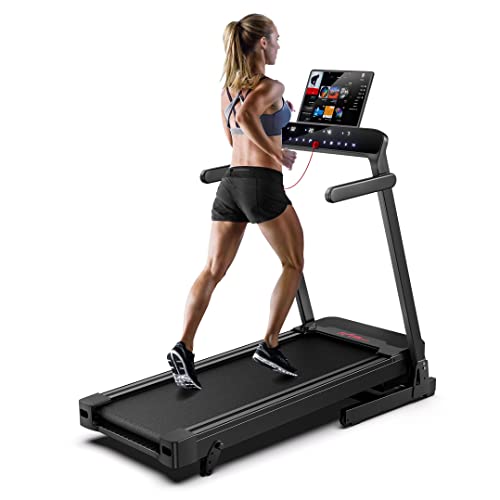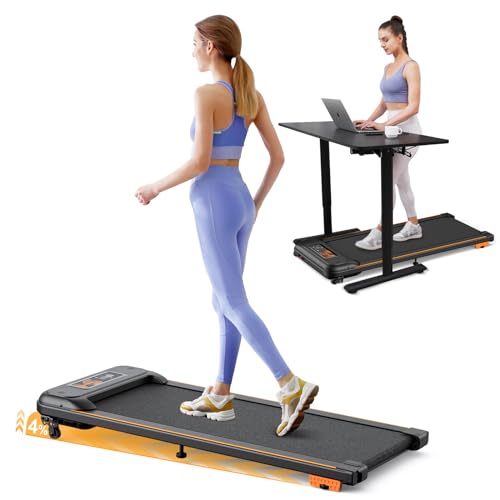10 Great Books On Treadmills Incline
페이지 정보

본문
 Tone Your Legs and Gluteus With Treadmills Incline
Tone Your Legs and Gluteus With Treadmills Incline When you walk on an incline treadmill your body is forced to work harder to overcome the added resistance. This means that more calories are burned, as well as strengthening the glutes and legs. It also improves the cardiovascular health.
When you walk on an incline treadmill your body is forced to work harder to overcome the added resistance. This means that more calories are burned, as well as strengthening the glutes and legs. It also improves the cardiovascular health.You can adjust the incline of almost all treadmills to increase your fitness challenge. However, you might be wondering if the treadmill's incline is actually beneficial to your exercise routine.
Increased Calories Burned
The treadmill's incline can boost the intensity of your exercises and help you reach your fitness goals quicker. You can also keep your workouts interesting by using different incline settings. This will challenge different muscles.
Walking or running on an incline increases the muscles that are activated in your legs, particularly the quads, hamstrings and glutes. This is a great way to improve lower body strength and tone without the possibility of injury or abrasion to joints. Due to the increased metabolic rate that comes with exercising at an angle, running and walking on a slope will result in burning more calories.
Incline treadmills are particularly beneficial for runners. They can help build endurance and reduce knee pain, while increasing cardiorespiratory fitness and burning calories. This is because incline treadmills enable runners to work at a higher pace and without the risk of injury. Incline treadmills also permit runners to run uphill, which requires more effort, and can increase their endurance and calories burned further.
Treadmills that incline can also be used for strength training, helping you build your upper body. Many treadmills come with handrails that offer stability and can be utilized for exercises for your arms during your workout. You can add weights on the treadmill for an extra challenge or you can add Squats and lunges into your workout to work out your upper body.
Although incline treadmills have many advantages, it's crucial to ensure that you exercise in a secure and comfortable environment and refer to your treadmill's user manual for safety tips and warnings. If you're a novice to incline treadmills it is recommended to start slow and gradually increase the intensity of your incline treadmill exercise.
Muscle Tone
Walking and running on a treadmill with an incline will work different muscles than the ones used on the flat surface. The incline will require use of your quadriceps, calves and glutes to push yourself uphill. The extra effort will test your hamstrings as well as the muscles in your back. These additional muscle groups aren't only going to increase the amount of calories burned during your workout but will also strengthen these muscles as they try to keep a good form and posture while you move.
In the end even those who might not be able to run outdoors due to an injury can still benefit from the incline feature on their treadmill. Inclining training on a treadmill can help you increase your cardio endurance while reducing the strain on your knees and hips. Walking at an angle can help strengthen your leg muscles, improve your balance and coordination.
If you're just beginning your incline training, it's important to start out slow. A lot of experts suggest that you start with a modest incline of around 1 or 2 percent and gradually increase it. This will enable you to better simulate the slight elevation changes one would encounter outside and give you an idea of how to change the incline on a treadmill your body reacts to this type of workout.
You can increase your calories by inclining the speed when you are on the treadmill. This can also strain your buttocks and legs. Be careful not to go up too steep an upward slope, as this can cause you to grasp the handrails to support yourself and reduce the exercise of your leg muscles.
Reducing the impact on joints
Running and jogging can put an enormous amount of strain on your knees. Utilizing a treadmill's incline feature to simulate walking uphill however, minimizes the strain on your joints and can still provide an intense cardiovascular workout. A slight upward slope of 1 to 3% will level out the surface beneath your feet and shift the load away from your knees to your glutes. This is a great low-impact cardiovascular exercise for those who suffer from joint discomfort or recovering from an injury. It helps reduce knee strain.
A best compact treadmill with incline with an incline can increase the difficulty of your workout and makes you feel like you're running outdoors. If you're training for a cross country or marathon, you can prepare by practicing on various treadmill settings.
Another benefit of incline-walking on treadmills is that it protects joints by slowing or even preventing osteoarthritis in the knee. Exercise, such as incline walking, helps to prevent the destruction of cartilage and the supporting tissues in the knee. This is because the incline position prevents your knees from striking the ground with a lot of force.
If you're a novice to incline treadmill running or have knee issues begin by performing a short warm-up on the treadmill's surface prior to starting your training on the incline. Begin by walking at an incline of as low as 2-3%, and then gradually increase the incline in small treadmill incline increments until you become accustomed to the exercise. This will help you avoid injuries like shinsplints, and make your treadmill exercise more efficient.
Improved Heart Health
The incline on your treadmill will increase the load for your lungs and heart. Your body will be working harder to take in more oxygen, and over time this will help lower your blood pressure. The increased demands on your cardiovascular system of training on incline also increases your endurance, making it easier to achieve and maintain your desired heart rate.
Depending on your fitness level and health goals, you may want to start out with a lower incline and gradually increase it as time goes by. This will allow you to exercise in a proper manner and build the endurance and strength of your muscles required before moving to higher incline levels. You will also be able monitor your results more closely as you begin to feel and see the physical results of your hard work.
In addition to strengthening your calves and legs, incline walking will also to tone your hamstrings and buttocks. This makes it a great alternative to running, which can place too much stress on your knees and lower back.
Inline treadmill walking is an ideal option for those who suffer from joint pain or other health issues because it burns more calories than running, without putting too much stress on joints and other muscles. A few studies have demonstrated that incline treadmill running is more effective than running at burning calories and improving heart health.
Treadmills are one of the most popular pieces of exercise equipment available on the market, and with good reason. They allow you to keep on in line with your fitness goals no matter the weather or terrain and can provide a variety of challenging workouts that can increase your energy levels and keep you engaged. If you're looking to kick your treadmill workouts to the next level make sure you choose models with an adjustable incline feature that can let you challenge yourself by varying the incline according to your needs.
Increased Interval Training
The incline function of treadmills makes it an ideal tool to deliver interval training workouts. By alternating between periods of incline that are higher and flat or lower segments, you can increase the intensity while challenging the body safely at home. Begin by warming up on flat or slightly inclined surfaces and gradually increase the incline once your client is accustomed to it.
Jogging or walking on an angle of a few degrees feels more like running uphill than it does on flat ground, but with less of the joint impact and fewer injuries. Adding an incline can aid in building endurance and improve their cardiorespiratory fitness and overall health, while also helping to tone major muscles in the legs and buttocks.
For example, have your client begin their workout with a short walk at a moderate speed on the treadmill. Then, gradually increase the speed. After a short time of walking at an elevated incline, have them return to the moderate pace again for a few minutes to allow their body to recover. Then repeat the incline and moderate pace pattern several more times.
This type of workout helps boost VO2 max, which is the amount of oxygen your body can use during exercise. This can reduce strain on hips, knees and ankles when compared to running flat.
If your clients don't have access to a treadmill or prefer to exercise outdoors Try taking them for a hilly run or jogging route in their neighborhood. The natural hills that are in their area will give them a similar exercise, yet still providing them with the benefits of a treadmill incline.
- 이전글11 Ways To Completely Sabotage Your Case Battle 24.10.24
- 다음글A Guide To Treadmill Incline From Start To Finish 24.10.24
댓글목록
등록된 댓글이 없습니다.